We may receive a commission when you use our affiliate links. However, this does not impact our recommendations.
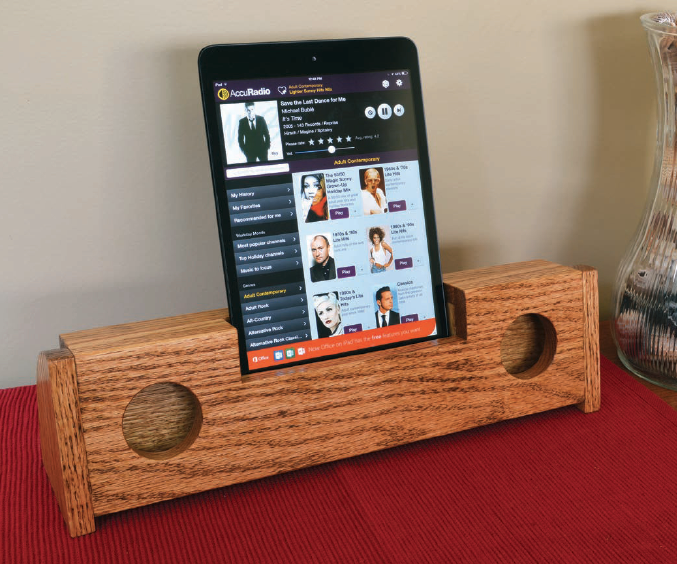 [Editor’s note: This wooden passive speaker is simple to build and makes a fantastic gift for anyone who owns a smartphone or tablet – which is pretty much everyone! Excerpted from “Build It With Dad: Woodworking Fun for the Whole Family,” available from ShopWoodworking.com]
[Editor’s note: This wooden passive speaker is simple to build and makes a fantastic gift for anyone who owns a smartphone or tablet – which is pretty much everyone! Excerpted from “Build It With Dad: Woodworking Fun for the Whole Family,” available from ShopWoodworking.com]
Tablets and smart phones are great for storing and playing your favorite music, but the built-in speakers are terrible. It’s not their fault really, since they sound about as good as possible for a speaker the size of a grain of rice. Unless you use headphones or an electronic speaker arrangement of some kind, you just don’t get the enjoyment you’re looking for. There is, however, a way to get better sound without electronics or batteries of any kind. It’s called a passive speaker, and it works the same way a megaphone does.
Those tiny speakers on the bottom of your tablet or phone throw sound in all directions. A passive speaker takes the sound from the bottom and channels it in a single direction – forward – which immediately makes it easier to hear in the same way a megaphone directs sound at a crowd. Meanwhile, the open space inside a passive speaker reflects the sound waves and reverberates to add depth and a feeling of spaciousness, the way the interior of a guitar does.
Wow, this is all pretty complicated, right? Well no, not at all. In fact, a homemade passive speaker like the one in this project is easy to build, and it’ll reward you with fantastic sound. I’ve designed this speaker to work with my wife’s iPad Mini, so all the measurements are specific to it, but adjusting it for other tablets or cell phones is as simple as adjusting the overall length and location of the inner channels. I’ll address that at the end of the project.
Building the Passive Speaker
Begin by cutting the speaker front and back to size. The back is standard 1×4 oak, which actually measures 3/4″ thick; the front is 1/2″ oak; both have standard widths of 3-1/2″ so you’ll only need to cut them to length. The speaker back is a simple rectangle, but the front features a cutout for the iPad. Mark the workpiece per the Speaker Front Pattern, and cut the opening with a scroll saw, jigsaw or coping saw. To make those square corners you may find it easier to do it in four cuts, as shown below.
Wrap a piece of #100-grit sandpaper around a small wooden block and sand the opening square.
Follow with #150- or #180-grit paper to nicely smooth the edges. Mark the locations of the speaker holes per the Speaker Front Pattern, and use a 1-5/8″ Forstner or spade bit to drill them out.
Whichever bit you use, this is a pretty large diameter so it’s a must to clamp the workpiece to a solid surface. Note here the piece of scrap under the workpiece to prevent tear-out on the underside and protect the benchtop.
The speaker is essentially a sandwich: a system of channels in between the solid front and back routes the sound to the chambers on either side. Create this by cutting spacers from standard 1/2″ oak square dowel to the lengths shown below.
Square ends are a must for these spacers, so a miter box and a fine-cut saw is your best bet. You might find it easier to keep track of all these small parts if you print out a full-size copy of the Layout Guide, and then set each of the spacers in its assigned spot on the pattern.
Assembling the speaker is just a matter of gluing the spacers into their respective places on the speaker back, then gluing on the front to complete the sandwich.
I’ve lettered the spacers in the best order to glue them into place, essentially from the bottom up. Start with the long Part C on the bottom, and then glue Parts D, E and so on in order on each side. Finish by gluing the single center divider into place. Apply glue to the top surface of each spacer and put the speaker front in place, then clamp up the entire assembly to dry. When dry, give the assembly a sanding with #100-grit, followed by higher grit as desired.
Transfer the pattern for the two speaker supports to 1/2″ stock, then cut them out. These parts are too small to clamp up and cut with a jigsaw, so I’m using a scroll saw. You can also use a coping saw or, if you have one, a band saw.
I find it easier to sand edges of identical small parts by taping them together and doing them simultaneously. This gives a wider sanding area, which helps keep the sanding block square to the edges, and gets the job done in half the time. Start with #100-grit paper, followed by #150- or #180-grit. Repeat for the faces.
To attach the supports, place the speaker face down on your worksurface, apply a bit of glue to the mating surfaces, and clamp them to the assembly.
The table surface automatically gets the supports flush on the speaker front, while placing a straight piece of scrap along the top edge aligns them with the speaker top.
When the assembly has dried, remove the clamps and apply the finish of your choice. I used a golden oak stain, but a darker walnut stain would also look great. Be sure to have your kids spread out newspaper and wear gloves when applying stain, as it makes a near-permanent mess of anything you get it on. (Unlike me, it might also be a good idea not to wear a bright yellow shirt!) Apply the stain per manufacturer’s directions, and when dry follow by brushing or spraying on a clear topcoat of shellac, polyurethane or lacquer.
Now, let’s address customizing this passive speaker for your kids’ devices. The speaker works when you place the device inside the opening, where the inner channels direct sound from the device speakers through the side chambers. So the channels need to match up to your device’s speakers.
To customize this project to a particular device you’ll need to change two things – the overall length and the center sound channels. The iPad Mini is 5-1/4″ wide, so I’ve sized the opening at 5-1/2″ to give 1/8″ clearance on each side, which is what I recommend you do as well. Have your kids measure their device and add 1/4″ (for 1/8″ clearance on the sides), and that’s the size of your opening. Shorten the length of Parts C and G accordingly to accommodate. For example, an iPhone 5 is about 2-1/4″ wide so you’d want the opening to be 2-1/2″. That would shorten the overall length by 3″.
The sound channels at the bottom should match the speakers on the bottom of your device. The iPad Mini has two internal stereo speakers, each 3/4″ long. I’ve sized the sound openings in the project speaker to reflect this – the 1″ openings allow for the iPad to move 1/8″ in each direction without blocking the internal speakers. Using an iPhone 5 as an example again, the speaker is about 1/2″ long. Adding 1/8″ to each side makes for a channel opening of 3/4″. Adjust yours accordingly.
Finally, although most tablets and cell phones offer stereo sound, some have only one speaker on the bottom located to one side or the other. If this is the case, simply eliminate the center divider (Part H), and make your speaker with a single opening at the bottom that channels the sound in both directions.
Click here to download a PDF of the book layout of this project: Hamler_PassiveSpeaker_excerpt
For more fun projects like this one, check out A.J. Hamler’s “Build It With Dad.”
Here are some supplies and tools we find essential in our everyday work around the shop. We may receive a commission from sales referred by our links; however, we have carefully selected these products for their usefulness and quality.




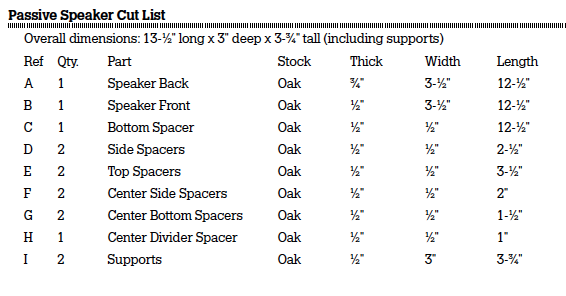
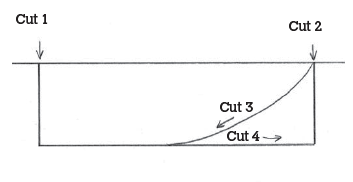
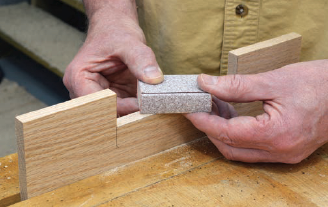
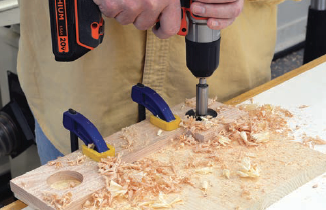
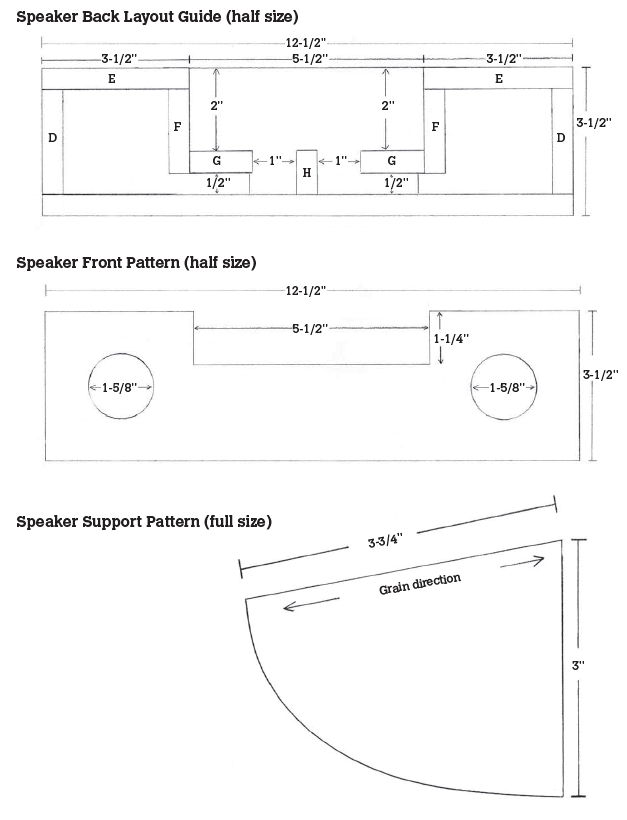
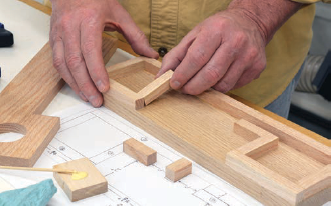
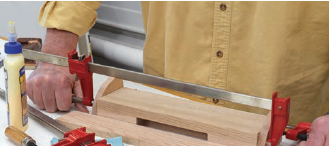






Cool project… I would make the front a little thinner, perhaps 1/4″ and put a hole in it for pressing the home screen button.
Great article. But would A, D and Es deminsions need changing also?